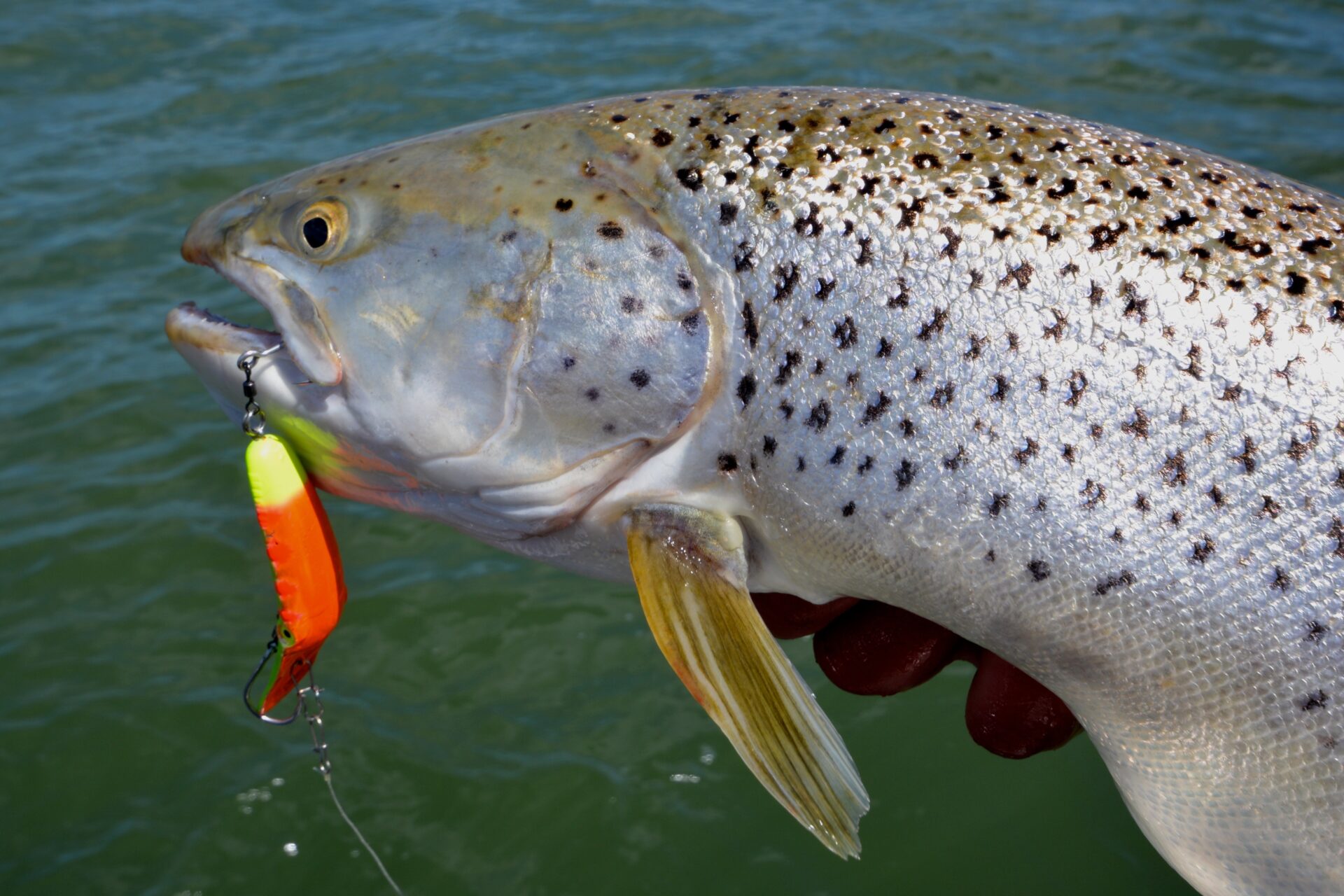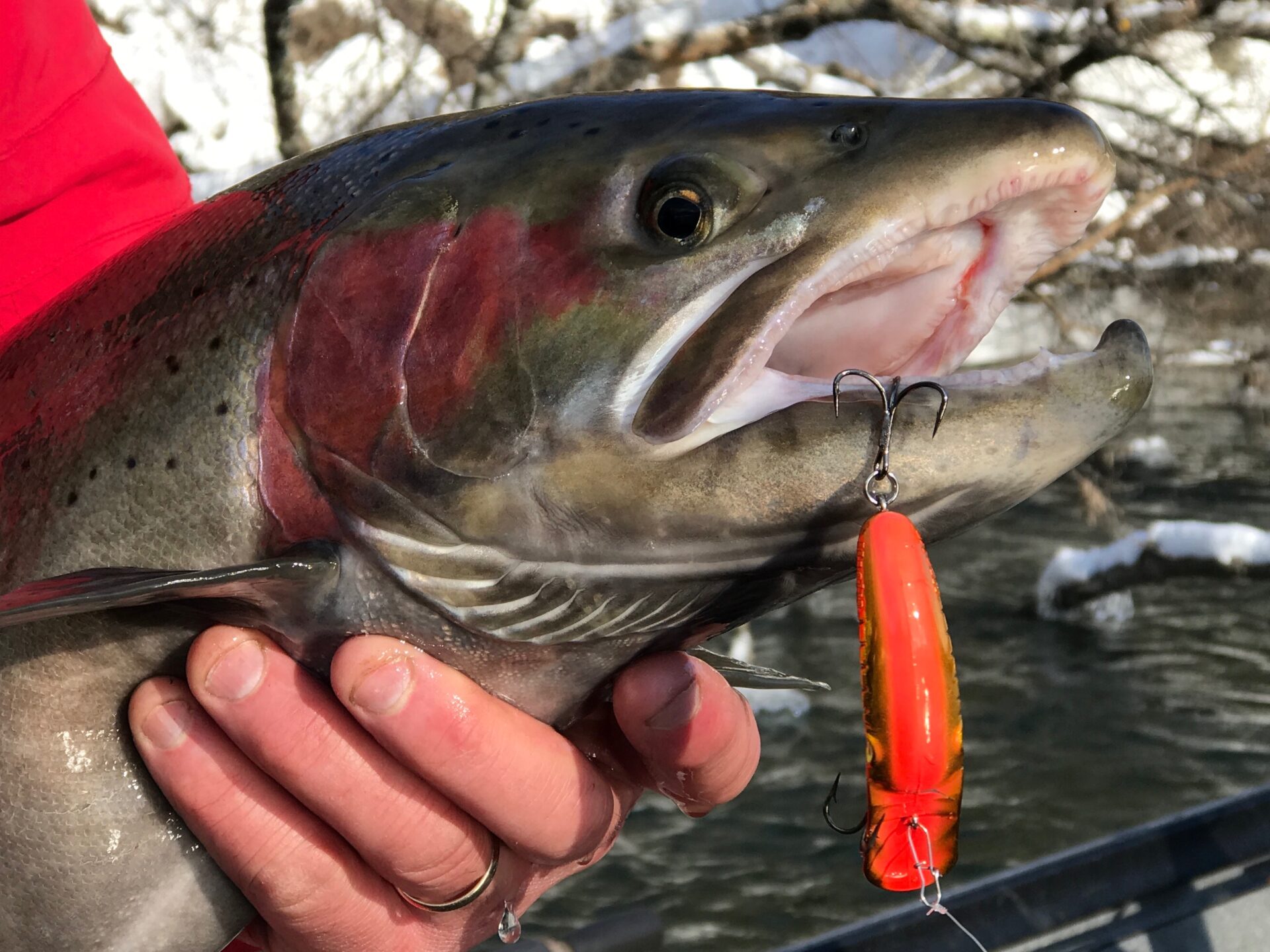Steelhead with Mag Lip Wide-Bend Treble Hooks

Running plugs like the Mag Lip with two Siwash hooks rigged using a barrel swivel between the hook and the split ring is another way to insure hooked fish stay buckled up and also makes it easier to release fish unharmed.
The Mag Lip has rapidly become the steelhead, salmon and trout plug of choice among river guides, charter captains and serious fishing enthusiasts. One of the most common “modifications” we see involves replacing the factory supplied round bend tail treble hook with a hook one size larger and also using wide bend style trebles. Wide bend hooks tend to stick and stay stuck a little better than traditional treble hooks. All the salmonids are powerful fish and keeping them “hooked up” is just one of the challenges anglers who target these species face. A number of manufacturers produce wide bend treble hooks including Eagle Claw Lazer Sharp L949 Kahle, the Trokar TK310, Mustad KVD Triple Grip, Gamakatsu Extra Wide Gap and Matzuo Sickle Treble to name a few.
Some anglers also remove the belly hook on Mag Lip to help keep snags to a minimum. At slow to moderate trolling speeds, in slow to moderate current conditions or when fishing Mag Lip in combination with three way swivel and sinker rig removing the belly hook is no issue for Mag Lip. When fishing the Mag Lip in fast current or at faster trolling speeds it’s best to keep the belly hook in place to help stabilize the bait.
Another simple “modification” to consider is using not one, but two split rings on the tail hook. This configuration makes it tougher for a rolling and thrashing fish to gain leverage and tear free. It’s also important to note that some anglers favor a single Siwash hook in snag ridden areas or when live releasing fish. The single Siwash hook is rigged to a small barrel swivel added between the hook and the factory supplied split ring. When fishing Siwash hooks anglers can run a treble hook on the tail of the bait and a Siwash as the belly hook, or they can rig a Siwash hook on both the tail and belly of the lure.

